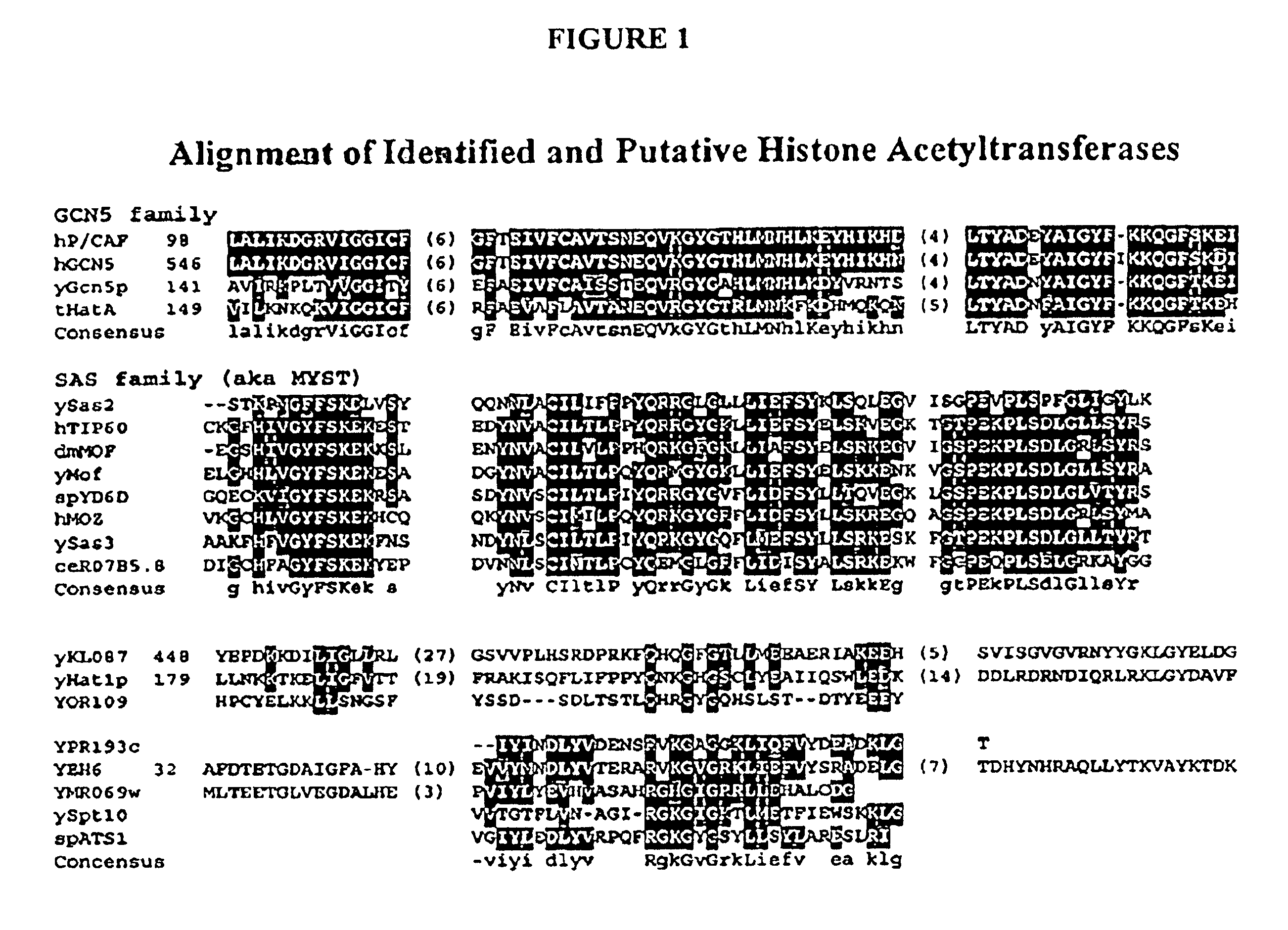Compositions and methods for modulating plant development
a technology of plant development and composition, applied in the field of compositions and methods for modulating plant development, can solve problems such as the possibility of generation
- Summary
- Abstract
- Description
- Claims
- Application Information
AI Technical Summary
Problems solved by technology
Method used
Image
Examples
example 1
[0168]This example demonstrates that FIE controls developmental stages after seed development.
[0169]A transgene that specifically provides FIE protein for seed viability, but does not appear to function at other stages of the plant life cycle was used to examine FIE function after developmental stages after seed development. To understand FIE polycomb function, Arabidopsis lines bearing a transgene, pFIE::FJE-GFP was generated. The introduced DNA sequence included 1,639 base pairs of FIE 5′-flanking sequences and a modified FIE 5′-untranslated region (jointly referred to as pFIE or SEQ ID NO:4), as well as sequences that encode the full-length FIE protein (FIE), a linker sequence encoding six glycine amino acids (SEQ ID NO:20), followed by sequences encoding a modified green fluorescent protein (GFP) (Y. Niwa, et al., Plant J. 1 18:455-463 (1999)). To contruct a FIE-GFP fusion protein, the FIE cDNA was amplified with primers FIE-Sal (5′-ATGTCGACGAGAGTCAGACAGAGAGAGAG-3′; SEQ ID NO:21...
example 2
[0178]This example demonstrates that FIE repressed expression of floral meristem identity genes.
[0179]To understand the molecular basis for the early flowering phenotypes, the expression of meristem and floral organ identity genes in mutant and control seedlings was measured. LEAFY (LFY) and APETAL1 (AP1) encode transcription factors that promote floral meristem identity in Arabidopsis and, with the aid of other factors, activate transcription of downstream floral meristem and organ identity genes such as AGAMOUS (AG), APETALA3 (AP3), and PISTILLATA (PI) (G. Parcy, et al., Nature 395:561-566 (1998)). LFY RNA was present at a low level, and AP1 RNA was not detected, in wild type 7-day and 14-day seedlings. The same result was observed in 7- and 14-day seedlings with the pFIE::FIE-GFP transgene. However, in seedlings that were homozygous fie-1 with a pFIE::FIE-GFP transgene, LFY RNA concentration was significantly elevated in 7-day seedlings, and AP1 RNA concentration was increased in...
example 3
[0185]This example demonstrates that expression of additional quantities of FIE results in delayed flowering.
[0186]Plants homozygous for the wild type endogenous FIE allele that also bear a pFIE::FIE transgene displayed late flowering. The delayed-flowering phenotype was associated with increased number of vegetative leaves produced (M. Koornneef, et al., Annu. Rev. of Plant Physiol. Plant Mol. Biol. 49:345 (1998)). Wild type (i.e., Columbia-0 ecotype or Landsberg erecta ecotype) produce 8 to 10 vegetative leaves before initiating flowering when grown under long-day (i.e., 16 hour light per day) conditions. In contrast, pFIE::FIE transgenic plants produced 15 to 25 leaves before initiating flowering when grown under the same conditions.
PUM
| Property | Measurement | Unit |
|---|---|---|
| Fraction | aaaaa | aaaaa |
| Fraction | aaaaa | aaaaa |
| Fraction | aaaaa | aaaaa |
Abstract
Description
Claims
Application Information
 Login to View More
Login to View More - R&D
- Intellectual Property
- Life Sciences
- Materials
- Tech Scout
- Unparalleled Data Quality
- Higher Quality Content
- 60% Fewer Hallucinations
Browse by: Latest US Patents, China's latest patents, Technical Efficacy Thesaurus, Application Domain, Technology Topic, Popular Technical Reports.
© 2025 PatSnap. All rights reserved.Legal|Privacy policy|Modern Slavery Act Transparency Statement|Sitemap|About US| Contact US: help@patsnap.com

